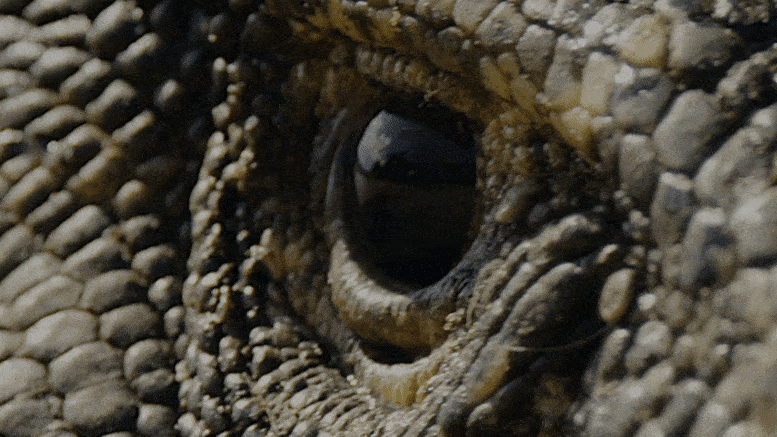

Un nuovo studio rivela che la capacità di seguire lo sguardo di qualcuno in una posizione inizialmente compromessa, nota come presa di prospettiva visiva, probabilmente ebbe origine nel lignaggio dei dinosauri circa 60 milioni di anni prima che apparisse nei mammiferi. Questa capacità cognitiva è stata trovata in alcune specie di uccelli e suggerisce che i dinosauri aviari, o uccelli, avessero una notevole neurocognizione che precede l’emergere di abilità simili nei mammiferi.
I ricercatori dell’Università di Lund hanno scoperto che l’acquisizione della prospettiva visiva, la capacità cognitiva di seguire uno sguardo ostruito, è nata nel lignaggio dei dinosauri circa 60 milioni di anni prima che apparisse nei mammiferi. La scoperta sfida l’idea che la cognizione complessa si sia evoluta principalmente nei mammiferi e fa luce sulle capacità cognitive degli uccelli e dei loro antenati dinosauri.
Quando qualcuno vicino a te gira la testa verso qualcosa nell’ambiente, probabilmente non puoi fare a meno di tenere traccia di dove si trova il suo sguardo. Questa reazione è stata osservata allo stesso modo in mammiferi, uccelli e persino rettili. È un modo efficace per raccogliere informazioni su ciò che ha attirato l’attenzione del tuo collega che potresti aver perso. Tuttavia, un comportamento più avanzato consiste nel seguire lo sguardo di qualcuno su un sito che inizialmente è oscurato dalla tua vista. Riposizionandoti per vedere cosa sta guardando l’altra persona, mostri di capire che l’altro ha una prospettiva diversa. Questa capacità, nota come presa di prospettiva visiva, si sviluppa nei bambini di età compresa tra uno e mezzo e due anni e serve come base per la successiva comprensione della comunicazione referenziale e del fatto che altre persone hanno una mente diversa dalla tua.
La presa di prospettiva visiva è stata finora trovata solo in pochissimi[{” attribute=””>species. Mainly in apes and some monkeys, but also in dogs and crow birds. However, there is limited knowledge regarding the evolutionary origins of this crucial social skill. A team of researchers from Lund University aimed to investigate a potential early emergence of visual perspective taking in dinosaurs. Through a comparison of alligators with the most primitive existing birds, known as palaeognaths, they discovered that visual perspective taking originated in the dinosaur lineage likely 60 million years, or more, prior to its appearance in mammals.

Figure 1. Experimental setups of the study. Panels depict experiment setups (from left to right) for alligators, small birds (red junglefowl and elegant-crested tinamous), and large birds (emus and rheas). (A) Setups for experiment 1 (gazing up). (B) Setups for experiment 2 (gazing to the side). (C) Setups for experiment 3 (geometrical). Red dots depict stimuli used to lure demonstrators’ gazes (for more information about stimuli, see Materials and Methods). Credit: Science Advances, DOI: 10.1126/sciadv.adf0405
Crocodilians are the closest living relatives to birds. Their neuroanatomy has remained largely unchanged for hundreds of millions of years, and is similar to that of the common ancestor of dinosaurs and crocodilians. Palaeognath birds comprise the ostrich birds, such as emus and rheas, but also the flighted tinamous. Their brains are in large parts comparable to their forebearers, the non- avian paravian dinosaurs, which feature such celebrities as the velociraptors. Comparing these two groups of animals creates a bracket around the extinct lineage of dinosaurs leading up to modern birds.
The study revealed that alligators do not demonstrate visual perspective taking, although they do follow gaze to a visible location. In contrast, all tested bird species exhibited visual perspective taking. Additionally, the birds engaged in a behavior called “checking back,” where the observer looks back into the eyes of the gazer, and re-tracks the gaze, when unable to find anything in the direction of their gaze the first time. This behavior indicates an expectation that the gaze is referring to a target in the environment. Previously, this has only been observed in humans, apes and monkeys, and ravens.
Palaeognath birds emerged 110 million years ago, predating the two mammal groups endowed with visual perspective taking – primates and dogs – with 60 million years. Considering the neuroanatomical similarities between these birds and their non-avian forebearers, it is plausible that the skill originated even earlier in the dinosaur lineage. However, it is less likely to have been present among the earliest dinosaurs, which had more alligator-like brains. Maybe future research will show the ability to be more widespread among mammals than currently known, but even if that would be the case it will most probably still be predated by the dinosaur origin. Nevertheless, it is not surprising that visual perspective taking emerged earlier in the dinosaurs, which include the birds, given their superior vision compared to most mammals, that historically relied on nocturnal adaptations. It was only with the emergence of the primates and certain carnivores that our visual capabilities improved.
This is yet another finding that calls into question the prevailing view that mammals drove the evolution of complex cognition, and that they are the cognitive yardstick to which other animals should be compared. An increasing number of studies show the remarkable neurocognition of the avian dinosaurs, the birds, which might prompt a rethinking of the natural history of cognition.
Comments from the authors:
Senior author, prof. Mathias Osvath:
“Early in my career, crow birds earned the nickname “feathered apes,” due to numerous research findings that showcased their remarkable cognition. However, I’m beginning to question whether it would be more fitting to consider primates as honorary birds.”
First author (then PhD-student), Dr. Claudia Zeiträg:
“Birds are commonly being overlooked when it comes to their cognitive skills. Our findings show that they do not only have several cognitive skills on par with those of apes, but that their forebearers most likely had these skills long before they evolved in mammals.”
Middle author, Dr. Stephan Reber:
“Crocodilians are ideal models to study the evolutionary origins of cognitive capacities in birds. What they share most probably existed in the common ancestor of dinosaurs and crocodilians. If crocodilians lack an ability birds possess, it likely evolved in the dinosaur lineage after the split. This approach allows us to study the cognition of extinct species.”
Reference: “Gaze following in Archosauria—Alligators and palaeognath birds suggest dinosaur origin of visual perspective taking” by Claudia Zeiträg, Stephan A. Reber and Mathias Osvath, 19 May 2023, Science Advances.
DOI: 10.1126/sciadv.adf0405

“Sottilmente affascinante social mediaholic. Pioniere della musica. Amante di Twitter. Ninja zombie. Nerd del caffè.”





More Stories
Un decesso per il virus del Nilo occidentale è stato segnalato nella contea di Santa Clara – NBC Bay Area
Ultime notizie sugli astronauti della NASA: aggiornamento sull’equipaggio del Boeing Starliner bloccato nello spazio
Ci sono oceani sotto la superficie di Marte? La sonda InSight della NASA rivela un enorme serbatoio di acqua liquida